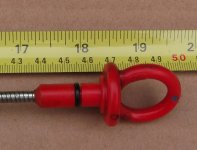- Joined
- Feb 2, 2017
- Messages
- 54
- Points
- 15
Hi all.
I've bought a 2013 1.2l 500 and i thought I'll change the oil. The car was recently serviced, but it's new to me so didn't want to take a risk.
Anyways, when checking oil, the dipstick is oily about 10-15cm above the actual reading part. I would wipe it several times and try again, same story. I tried when the 500 is cold, tried few minutes after it was on.
I thought the mechanic overfilled it, so i couldn't get a proper reading.
Then I did service myself and filled it with exactly 2.8ltrs of oil (measured). Same story.
Any advice?
I've bought a 2013 1.2l 500 and i thought I'll change the oil. The car was recently serviced, but it's new to me so didn't want to take a risk.
Anyways, when checking oil, the dipstick is oily about 10-15cm above the actual reading part. I would wipe it several times and try again, same story. I tried when the 500 is cold, tried few minutes after it was on.
I thought the mechanic overfilled it, so i couldn't get a proper reading.
Then I did service myself and filled it with exactly 2.8ltrs of oil (measured). Same story.
Any advice?




